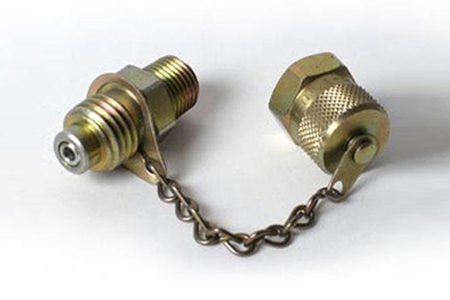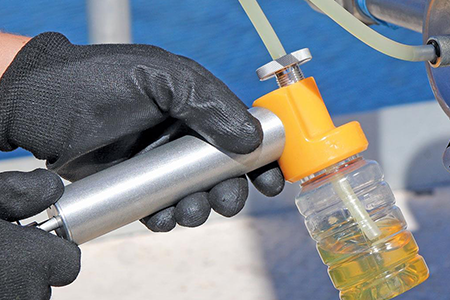Two of the most critical requirements of oil sampling are the correct location and the process of sampling. A sampling port is a location from which you can collect oil samples. It can either be a valve, tap, or drainpipe. A sampling port that follows the best practices ensures that you get a sample that best represents the current condition of your machine. Without a representative sample, oil analysis is just a waste of time. In other words, garbage in garbage out.
Sampling Ports
It is important to install primary sample ports where routine oil samples are taken. They're employed to keep an eye on oil pollution, wear debris, and the oil's chemical and physical characteristics. The placement of the primary sample port varies, but in circulating systems, it should be on the return line before the fluid reaches the sump or reservoir. A suitable sample port is intended to take samples that are the best representatives. Gauge adapters, port adapters, and sample ports with pilot tubes are used to do this.
Installing additional ports in key areas (secondary sampling ports) can help in isolation issues and determine the root cause of the problem. To separate components, secondary sampling ports can be strategically positioned on a system. By examining individual components, you can pinpoint the source of contamination. Only collect an oil sample from the secondary port location if the main port sample reveals an odd reading and you need to explore the root cause further.
Minimess Sample Valves
There are a variety of commercially available sample valves to choose from, each with its own set of features. The minimess sample valve is perhaps the most effective option, and it is generally employed on bigger systems. These unique sample ports function similarly to a check valve in that the valve remains closed until the sample port adapter is screwed (or pushed) on. For second-stage leak prevention, high-quality sample ports feature a dust cover with an o-ring. On one side of the adapter, a hose barb takes standard 1/4" O. D. plastic tubing. The adapter unseats the check ball in the valve and allows fluid to flow as it is threaded onto the sample port. These valves may be used on systems with pressures ranging from zero to 5000 psi.

Sample Valves
For clean and efficient oil sampling, sample valves are fitted into ports on sumps and oil circulation lines. As a result, a regulated, set sampling site is achieved. Sample valves can assist avoid sample contamination and leaking. They are also unobtrusive to the machine's usual operation. As a result, samples may be taken under regular working circumstances, improving sample quality.

Sampling from hydraulic, lubricating, and circulation systems is done in a simple, quick, and precise manner. A matching sample port adapter is used to get access to systems. The sample port adapter is attached to the sample port. After that, oil samples may be extracted from the system and deposited in a clean sampling vial for examination.
Why is it Important to Have Good Oil Sampling Hardware?

A lubrication professional extracting a representative oil sample is only as good as his or her instruments when combined with the knowledge of how to obtain a decent oil sample. You'll almost certainly end up with a non-representative oil sample if you don't have these two requirements.
Using incorrect or insufficient oil sampling gear, obtaining oil samples from inappropriate places, collecting samples wrongly, and even poorly handling the samples can all result in an oil sample that does not accurately reflect the real state of your equipment.
Oil sampling is one of the most essential milestones in an oil analysis procedure. The manner in which a sample is taken, the frequency with which it is gathered, the accessories utilized, and the processes followed all influence how informative oil samples are and, as a result, how useful the results are going to be.
When implementing an oil sampling program, the following questions should be addressed:
- Where is the ideal place to take an oil sample to guarantee accurate data is collected?
- What are the most effective instruments for collecting a sample from a specified location?
- Who will be in charge of taking the sample, and how consistent will it be each time it is taken from the same location?
Source: machinerylubrication.com


